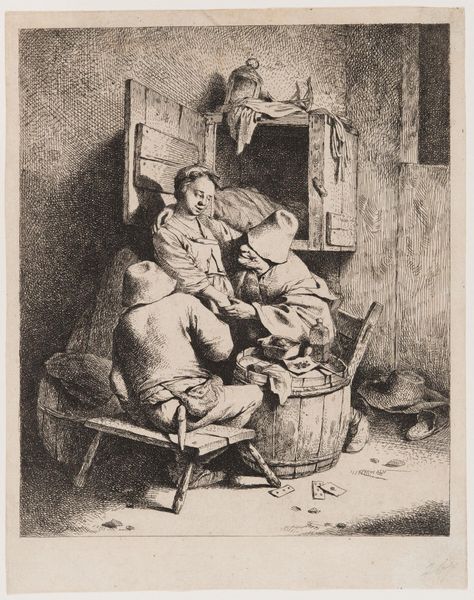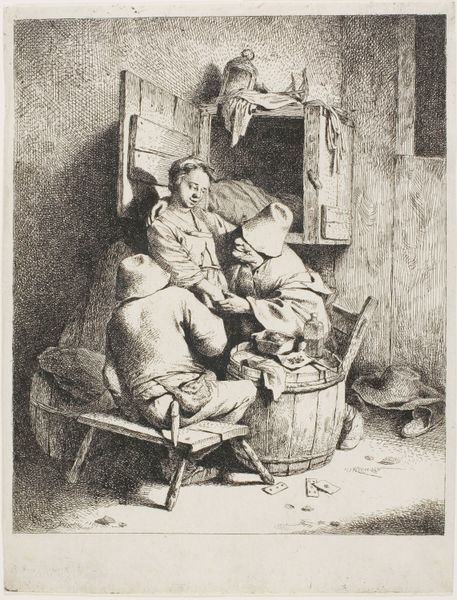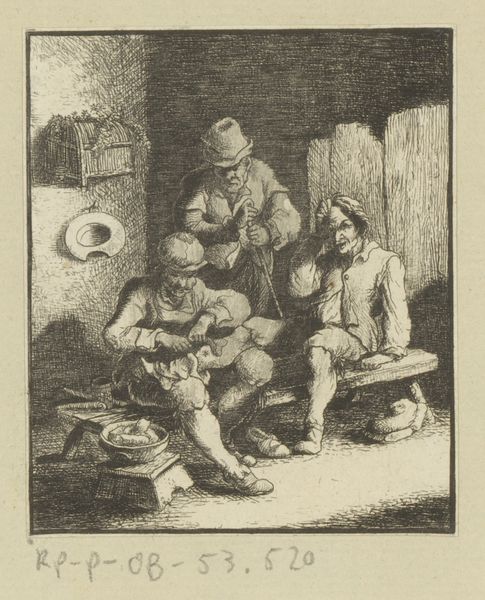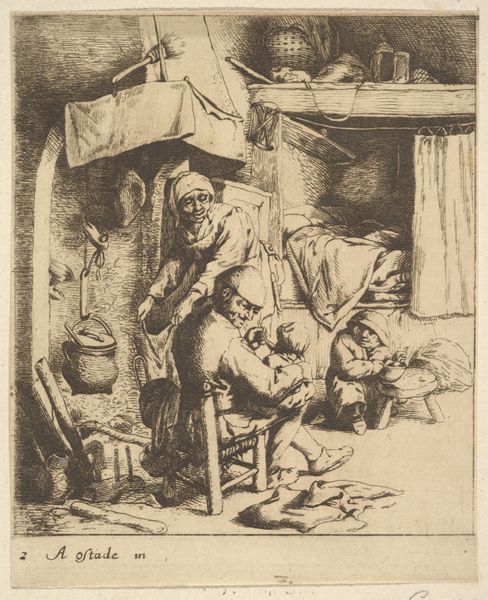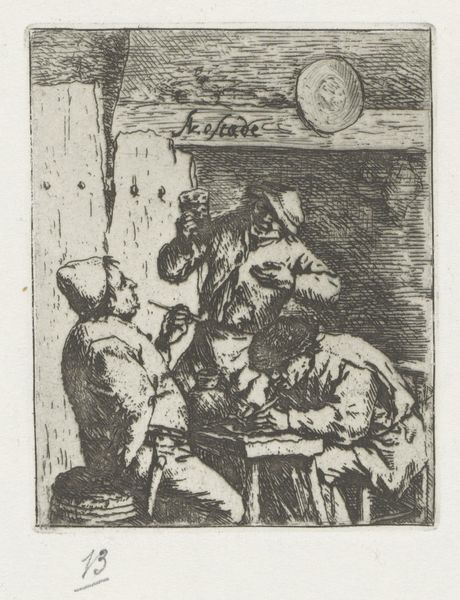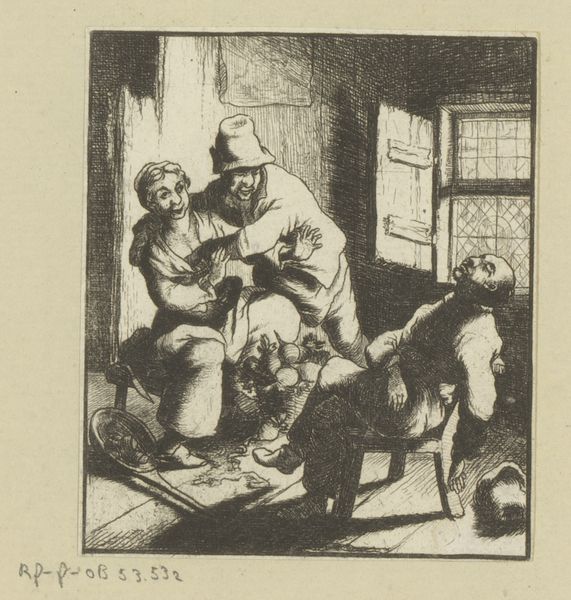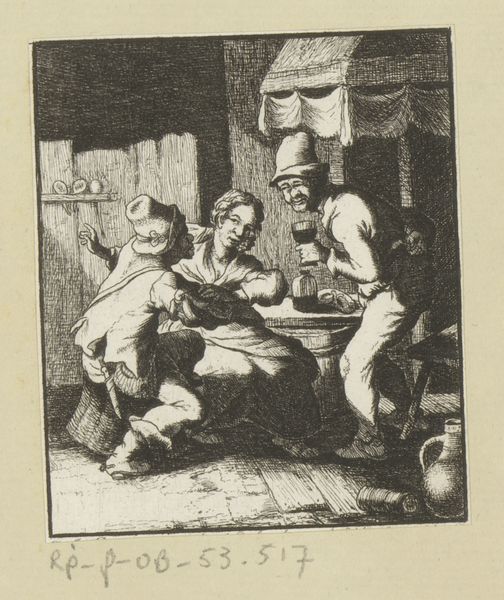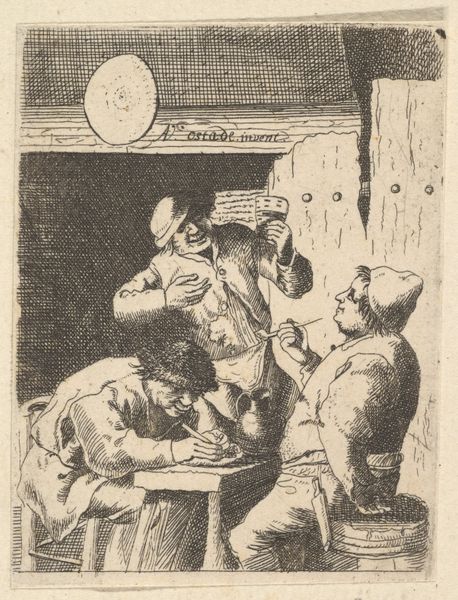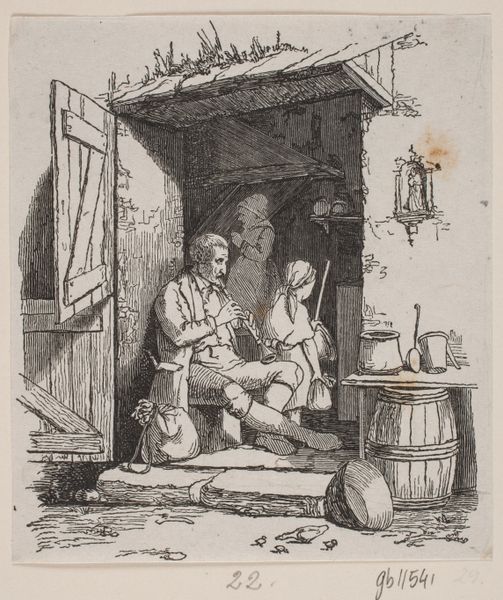
Ung værtinde og to siddende mænd i en krostue 1631 - 1664
print, etching
narrative-art
dutch-golden-age
etching
figuration
line
genre-painting
Dimensions: 221 mm (height) x 180 mm (width) (bladmaal)
Curator: This etching, "Ung værtinde og to siddende mænd i en krostue," or "Young Hostess and Two Seated Men in a Tavern," was created by Cornelis Pietersz Bega sometime between 1631 and 1664. The artist worked extensively in the Dutch Golden Age. Editor: It's a cramped interior, isn't it? The figures seem to press forward, right to the picture plane, as if inviting you into their enclosed space. It has such an immediacy despite its age. Curator: Yes, Bega captures an intimate, perhaps even voyeuristic, glimpse into a lower-class tavern. Look closely at the scene: we see a woman, likely the hostess, flanked by two men deeply involved in a card game. Note how the work is made out of line that emphasizes the detail in the clothes. What is its source? Where does it come from? Editor: Thinking formally, the composition draws your eye around in a tight circle, from the woman’s face, down to the men's hands, following the diagonal of the stool. It returns to the cupboard, the hat, and finally the figure leaning in to embrace her again. This is such great attention to the construction of shapes, depth and forms, I think it provides its tension, that intimacy you speak about. Curator: Considering the print medium—etching—tells us about accessibility and dissemination, the labor needed for its circulation is as important as the depicted one. The etching as a technology itself allows stories and images of common life to travel to other cities. The card game is not only an event within the picture but is analogous with the gamble one takes in creating this reproduction to share with audiences beyond the town it represents. Editor: Your argument emphasizes the means of artistic distribution, and it strikes me in contrast, I think the close tonal range, especially the darks and shadows, also creates a sense of secrecy, almost like we are witnessing a clandestine activity. It almost reminds me of the philosophical engagement I felt when viewing the piece, too. Curator: Thinking about materiality then gives way to think of the broader circulation of social customs. Its very display in the gallery allows the viewers now to reconsider their current understanding of domestic spaces. Editor: It definitely draws one in. Curator: It makes you think and be present.
Comments
No comments
Be the first to comment and join the conversation on the ultimate creative platform.
